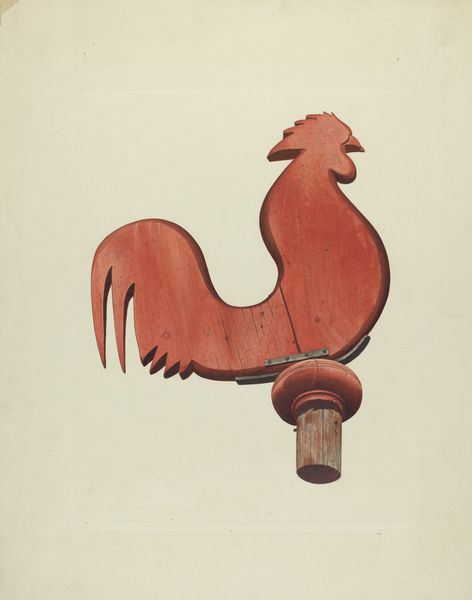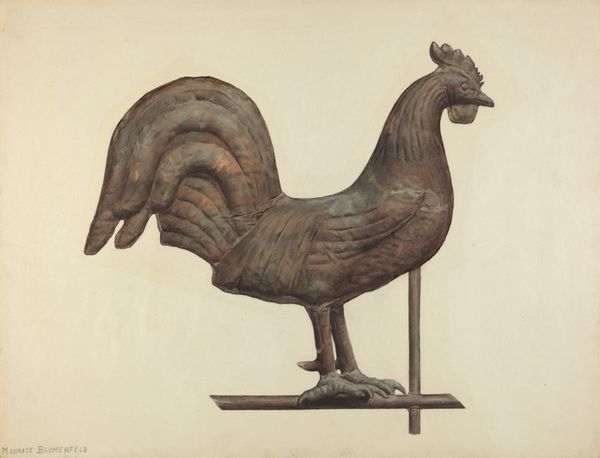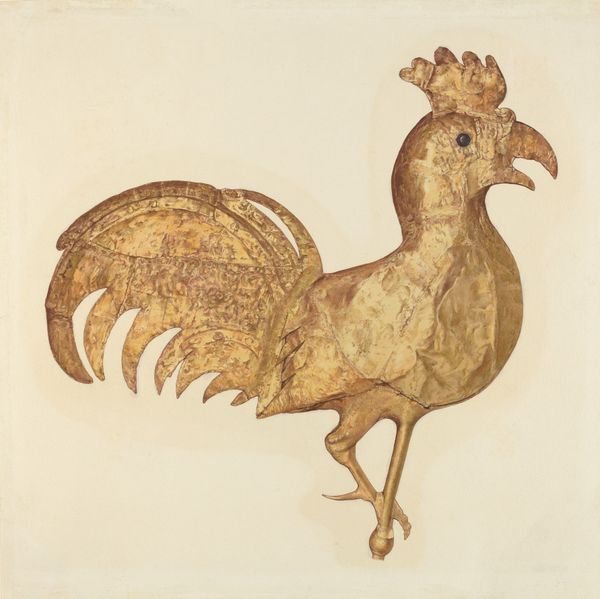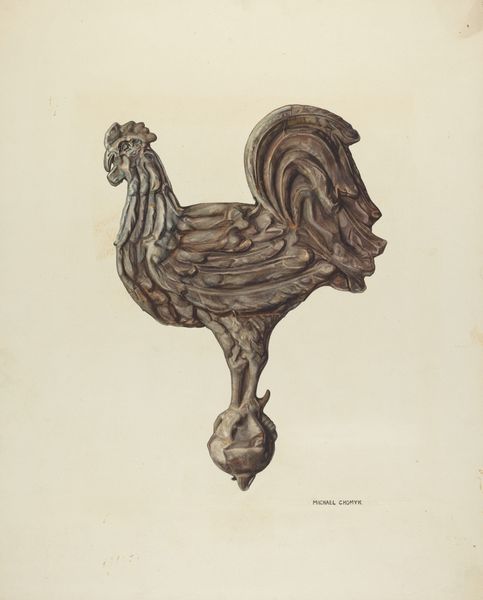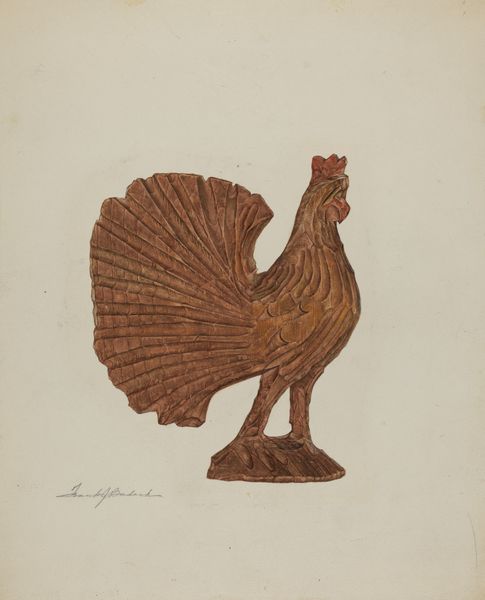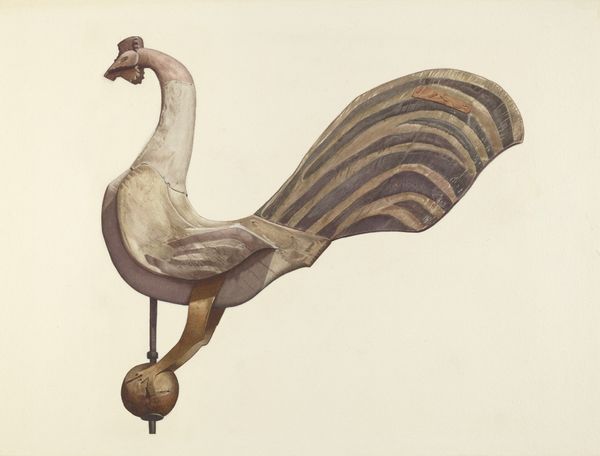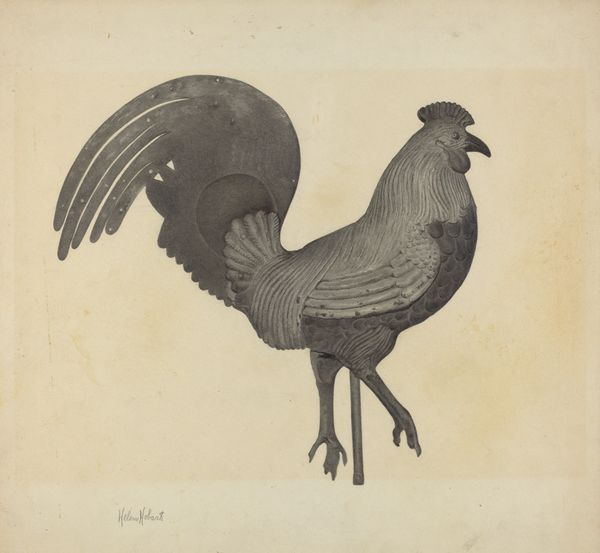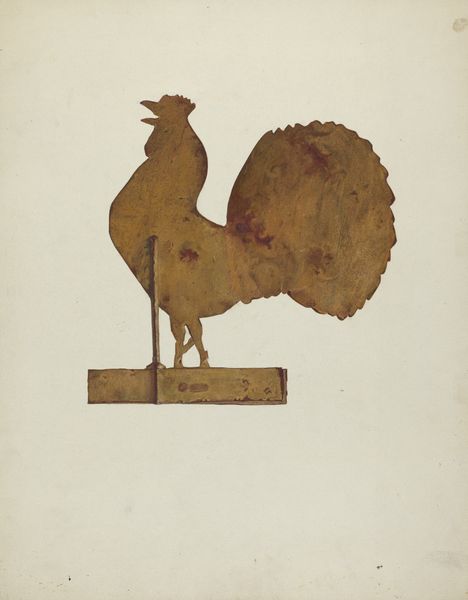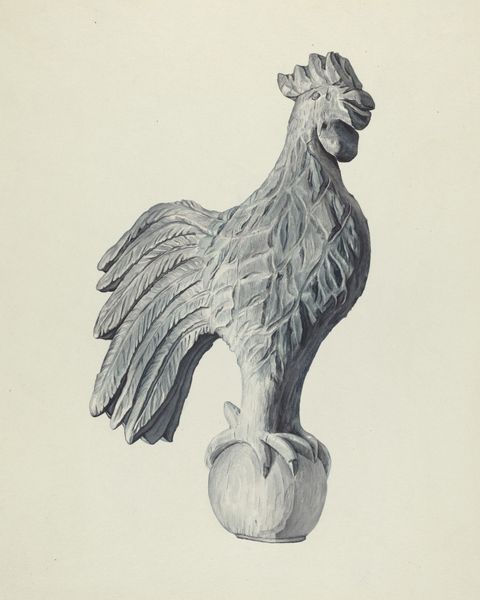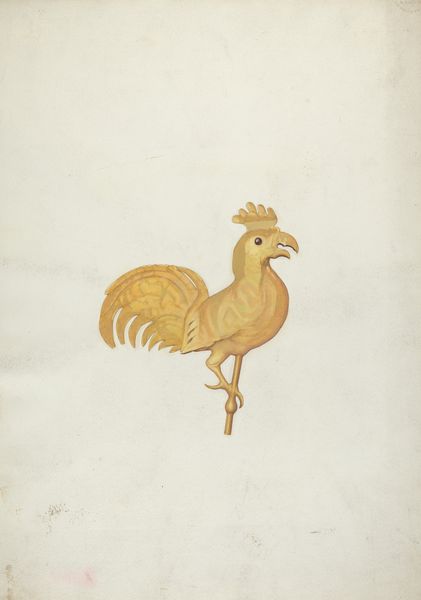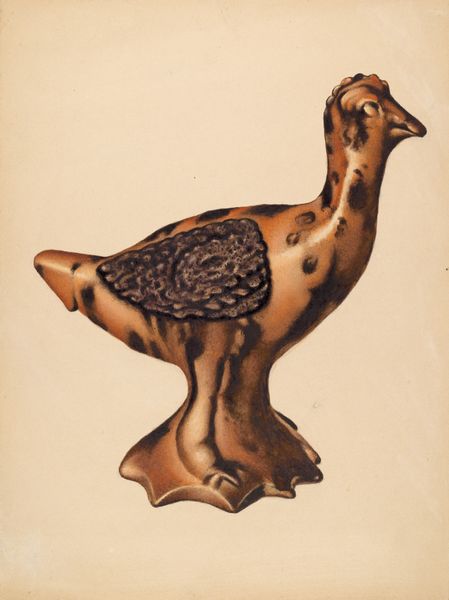
drawing
#
drawing
#
toned paper
#
possibly oil pastel
#
coloured pencil
#
underpainting
#
pastel chalk drawing
#
painting painterly
#
animal drawing portrait
#
portrait drawing
#
watercolour illustration
#
watercolor
Dimensions: overall: 31.5 x 30 cm (12 3/8 x 11 13/16 in.) Original IAD Object: 6 5/8" high; 7 1/2" wide
Copyright: National Gallery of Art: CC0 1.0
Editor: So, this is H. Langdon Brown’s “Weather Vane,” created around 1937. It appears to be a drawing, perhaps in watercolor or pastel, on toned paper. It’s a really charming, almost folksy depiction. What's your take on this piece? Curator: Well, this work interests me particularly from a cultural standpoint. Consider the era, the late 1930s, amidst the Great Depression. What role could such a simple depiction of a common object play in the art world and wider society? Editor: I guess it seems… nostalgic? Maybe a longing for simpler times, considering everything that was going on? Curator: Precisely! And consider weather vanes themselves – their presence on barns and public buildings speaks to a deep connection with nature and rural life. Brown might be tapping into this connection to evoke a sense of stability, something particularly valuable during that period. Who would be interested in viewing and purchasing this artwork? Editor: Hmm… maybe people who were migrating to urban centers but missed their rural roots? Or institutions looking to project a certain image? Curator: Good point! It's about the public role of art and its social function. Do you see how this seemingly simple image interacts with its historical context? What might have been Brown's intention when painting this weathervane, especially with that vibrant red eye? Editor: Now that I’m thinking about the red eye, it almost adds an element of… watchfulness. Like a guardian figure overlooking the landscape. I guess, overall, it’s less simple than I initially thought! Curator: Exactly! Art often reflects and shapes cultural narratives, making even a common object rich with socio-political significance. Editor: This makes me realize how much a work is tied to its original public consumption! Curator: Yes, how we approach history shifts our appreciation of the artwork itself. Thanks, I appreciate our reflections.
Comments
No comments
Be the first to comment and join the conversation on the ultimate creative platform.
